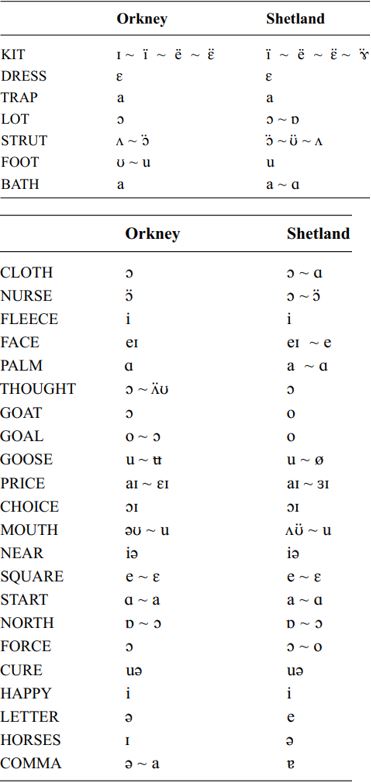

Grammar


Tenses


Present

Present Simple

Present Continuous

Present Perfect

Present Perfect Continuous


Past

Past Simple

Past Continuous

Past Perfect

Past Perfect Continuous


Future

Future Simple

Future Continuous

Future Perfect

Future Perfect Continuous


Parts Of Speech


Nouns

Countable and uncountable nouns

Verbal nouns

Singular and Plural nouns

Proper nouns

Nouns gender

Nouns definition

Concrete nouns

Abstract nouns

Common nouns

Collective nouns

Definition Of Nouns


Verbs

Stative and dynamic verbs

Finite and nonfinite verbs

To be verbs

Transitive and intransitive verbs

Auxiliary verbs

Modal verbs

Regular and irregular verbs

Action verbs


Adverbs

Relative adverbs

Interrogative adverbs

Adverbs of time

Adverbs of place

Adverbs of reason

Adverbs of quantity

Adverbs of manner

Adverbs of frequency

Adverbs of affirmation


Adjectives

Quantitative adjective

Proper adjective

Possessive adjective

Numeral adjective

Interrogative adjective

Distributive adjective

Descriptive adjective

Demonstrative adjective


Pronouns

Subject pronoun

Relative pronoun

Reflexive pronoun

Reciprocal pronoun

Possessive pronoun

Personal pronoun

Interrogative pronoun

Indefinite pronoun

Emphatic pronoun

Distributive pronoun

Demonstrative pronoun


Pre Position


Preposition by function

Time preposition

Reason preposition

Possession preposition

Place preposition

Phrases preposition

Origin preposition

Measure preposition

Direction preposition

Contrast preposition

Agent preposition


Preposition by construction

Simple preposition

Phrase preposition

Double preposition

Compound preposition


Conjunctions

Subordinating conjunction

Correlative conjunction

Coordinating conjunction

Conjunctive adverbs


Interjections

Express calling interjection


Grammar Rules

Passive and Active

Preference

Requests and offers

wishes

Be used to

Some and any

Could have done

Describing people

Giving advices

Possession

Comparative and superlative

Giving Reason

Making Suggestions

Apologizing

Forming questions

Since and for

Directions

Obligation

Adverbials

invitation

Articles

Imaginary condition

Zero conditional

First conditional

Second conditional

Third conditional

Reported speech


Linguistics

Phonetics

Phonology

Linguistics fields

Syntax

Morphology

Semantics

pragmatics

History

Writing

Grammar

Phonetics and Phonology

Semiotics


Reading Comprehension

Elementary

Intermediate

Advanced


Teaching Methods

Teaching Strategies

Assessment
Vowels Lexical sets
المؤلف:
Gunnel Melchers
المصدر:
A Handbook Of Varieties Of English Phonology
الجزء والصفحة:
42-2
2024-02-12
1430
Vowels
Lexical sets
Variation in quantity is not indicated in the following table.

Further comments relating to the lexical sets
KIT
This vowel is always short, but displays considerable qualitative variation, most of which is not exclusive to Insular Scots. The last allophone in the Shetland column is, however. It is found before labials and velars. A piece of evidence of its use before the velar nasal is the following cross-dialectal miscomprehension as experienced in a Shetland knitting course by the present writer: The local teacher asked one of the participants, a lady from Lancashire working on a pair of gloves, whether she had trouble with her fingers, which was perceived as fungus.
DRESS
is usually half-long and often fully-long. Before /d/ and /n/ which are dental in Shetland, it is commonly realized as an upgliding vowel  . This is probably what some lay observers have in mind when they talk about “palatalized” consonants.
. This is probably what some lay observers have in mind when they talk about “palatalized” consonants.
TRAP
There are raised variants in Fair Isle and some Orcadian accents. Before certain consonants, on the other hand, notably the cluster /nd/, the realization is generally [a:], so-called HAND darkening (Johnston 1997: 485).
STRUT
tends to be rounded, especially in Shetland.
NURSE
As in Scots generally, there is no NURSE merger.
PALM AND START
vary regionally. The use of a back vowel may signal locality as well as influence from Standard varieties.
GOOSE
In traditional Shetland dialect, a great number of words in this set have an [ø] vowel. It is popularly believed to be a preserved Norn feature, and is indeed typically found in Scandinavian-based vocabulary, such as tröni ‘pig’s snout’, and löf ‘palm of the hand’, but also in more modern words, such as curious, poor (with a lowered variant [œ] before the /r/).
The use of these vowels is recessive.
PRICE
varies according to phonetic environment in quality (cf. the table) as well as quantity.
MOUTH
varies along the dialect continuum, i.e. the monophthong is a regular feature of the traditional dialects.
SQUARE
is very distinctive in Fair Isle and Whalsay, realized as  .
.
NORTH AND FORCE
are clearly distinctive in the speech of many Shetlanders and Orcadians.
 الاكثر قراءة في Phonology
الاكثر قراءة في Phonology
 اخر الاخبار
اخر الاخبار
اخبار العتبة العباسية المقدسة

الآخبار الصحية















 "المهمة".. إصدار قصصي يوثّق القصص الفائزة في مسابقة فتوى الدفاع المقدسة للقصة القصيرة
"المهمة".. إصدار قصصي يوثّق القصص الفائزة في مسابقة فتوى الدفاع المقدسة للقصة القصيرة (نوافذ).. إصدار أدبي يوثق القصص الفائزة في مسابقة الإمام العسكري (عليه السلام)
(نوافذ).. إصدار أدبي يوثق القصص الفائزة في مسابقة الإمام العسكري (عليه السلام) قسم الشؤون الفكرية يصدر مجموعة قصصية بعنوان (قلوب بلا مأوى)
قسم الشؤون الفكرية يصدر مجموعة قصصية بعنوان (قلوب بلا مأوى)


















